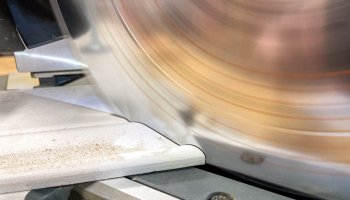
There’s probably no more useful saw for remodelers, plumbers, electricians, and homeowners than the reciprocating saw. It’s hard to imagine a jobsite without one. But that was the reality before the introduction of the Milwaukee SawZall—the trademarked name that became synonymous with reciprocating saws—in 1951. You might have already read our best corded reciprocating saw article. Regardless of your skill level, we asked our Pros their take on how to use a reciprocating saw.
What Makes a Reciprocating Saw Special
The reciprocating saw is basically a motorized hacksaw. Today, many manufacturers make them in corded, cordless, or both configurations. We use recip saws to cut drywall, wood with nails, studs, pipes, and more because it can do jobs other tools can’t do. Like any power tool with a blade, you need to take safety precautions, but there’s also a crude art to using a recip saw.
How to Use a Reciprocating Saw Starts with the Blade
The reciprocating saw is usually the right tool for the cutting job but if you don’t have the right blade, it’s the wrong tool. Select the blade for the material you’ll be cutting. Sure you’ll see all-purpose or multi-purpose blades just as you’ll see them for circular saws. We recommend using the material-specific blade. Anyone who has ever ridden a hybrid bike will probably understand. There are lots of choices, from the Diablo carbide-tipped recip blade to the Milwaukee Ax and Torch blades and Milwaukee Double Duty Upgrade blades for cutting thicker steel.
Insert the Blade into the Chuck
With the saw unplugged or the battery removed, insert the blade into the chuck. Nearly all of today’s reciprocating saws have a tool-free chuck. These simply make a quarter- or half-turn to release the blade. Release it and the chuck returns to its position, securing the blade.
Always carefully give the blade a tug to be sure it’s truly locked in place. Use gloves if you’ve just finished cutting—blades get very hot when cutting wood or metal. Check out our best work gloves if you want some suggestions on what we find works best.

Know Your Cut—and What’s Behind It!
Your attention will be on the intersection of the blade with the material once you start the cut, but the blade extends far beyond that. Be sure the blade won’t hit anything when it quickly moves back and forth from its furthest limit.
This is especially important when plunge-cutting into drywall or subfloor where you can’t see what’s behind the material. Be sure you won’t be cutting electrical wires or plumbing!
How to Use a Reciprocating Saw Like a Pro Means Varying Your Speed
The correct speed to use for various materials becomes intuitive over time. Often you’ll want to create a cut slowly before opening up the saw to do the bulk of the work. This gives you more control and a precise start. Slow down as the blade approaches its exit from the cut.
With metals like aluminum and even steel, slower cuts often preserve blade life. This goes double when using standard blades without carbide teeth.
Press the Shoe Against Your Material
The shoe represents the nose of the reciprocating saw. Its flat surface serves several purposes and is really the basis for the craft of using this kind of saw. Some shoes can be adjusted forward and back to extend blade life, but the shoe is important even if it doesn’t move. It stabilizes the saw and often the material. This significantly reduces vibration.

When using a reciprocating saw, push the shoe all the way against the material you’re cutting. You will note an immediate drop in vibration because the blade doesn’t fight the tool as much. If you fail to press against the material, the blade action pushes the saw away from the wood or metal. That violent vibration should indicate a need to press a little bit harder against the workpiece.
You want all of the force of the blade working for you, not against you. The blade shoe also acts as a fulcrum when making those rare plunge cuts. By raising the back end of the saw and using the shoe as a pivot point, you can make a controlled plunge cut into most wood.
Slowly Rock the Blade When Cutting Thicker Material
If the blade cuts slowly through the material, making you feel like you can skip the gym this week, it can mean a couple of things. It might indicate that the blade is dull and ready for replacement. It also might simply mean that you’re not letting the saw do the heavy lifting.
In thicker or denser material, gently rock the saw while you cut. You’ll find it typically results in faster progress. Rocking the saw engages less of the teeth of the reciprocating saw blade. This helps the blade focus on a smaller section of the cut as you go. It also helps chip ejection—clearing the path for the next stroke.

Now You Know How to Use a Reciprocating Saw!
We hope you’ve benefited from our tips on how to use a reciprocating saw like a Pro. Rarely will you find such a tough and handy tool. If you’re a Pro and you have a recip saw tips, add them in the comments below.







